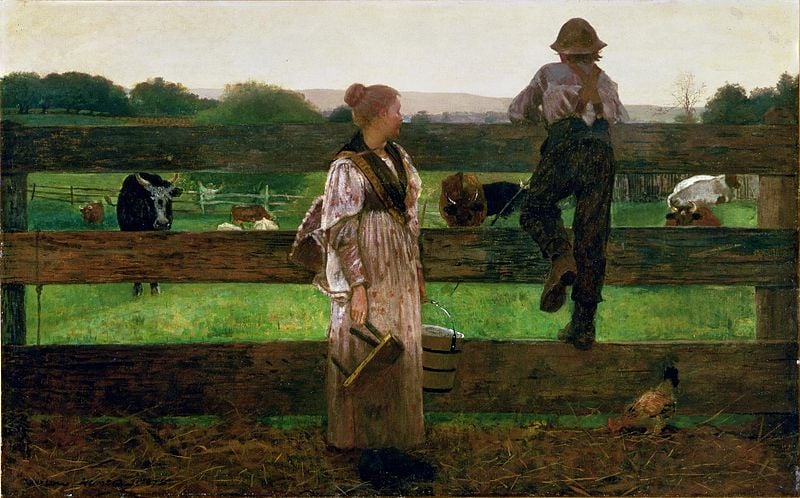
The Delaware Art Museum is the latest in a string of cash-strapped institutions that is looking to its art as a way to raise much-needed funds to pay down a mountainous debt and shore up its endowment.
The problem? Selling art for any other purpose than raising acquisition funds is a violation of the code of ethics established by museum watchdogs the American Alliance of Museums (AAM) and the Association of Art Museum Directors (AAMD), and could result in sanctions.
According to a story in the Wall Street Journal, the museum is moving ahead with plans to sell works including Winslow Homer‘s scenic Milking Time (1875). The museum says selling as many as four works in its collection is the only way that it can pay off a $19.8 million debt and replenish its endowment. The alternative would be closing the century-old Wilmington institution and its 12,500-object collection, according to the story.
Museum officials said the decision was made with the community in mind. Trustee Paula Malone tells the Journal, “I am sad about this, but as a trustee of the museum—not any one piece of art the museum holds—I am in support of doing what is necessary to keep the museum open.”
Delaware museum CEO Michael Miller confirmed that the institution’s previously announced plan to sell Isabella and the Pot of Basil by William Holman Hunt is moving ahead. The work will be offered at Christie’s London this month, with an estimate of up to $13.4 million.
But AAM president Ford Bell counters, “It’s a tragedy when works that belong to the community get sold.”
Other institutions have faced similar challenges, as the story points out. In March the AAMD sanctioned Randolph College in Lynchburg, Virginia, and its Maier Museum of Art after the school sold George Bellows’s painting Men of the Docks to the National Gallery in London for $25.5 million.